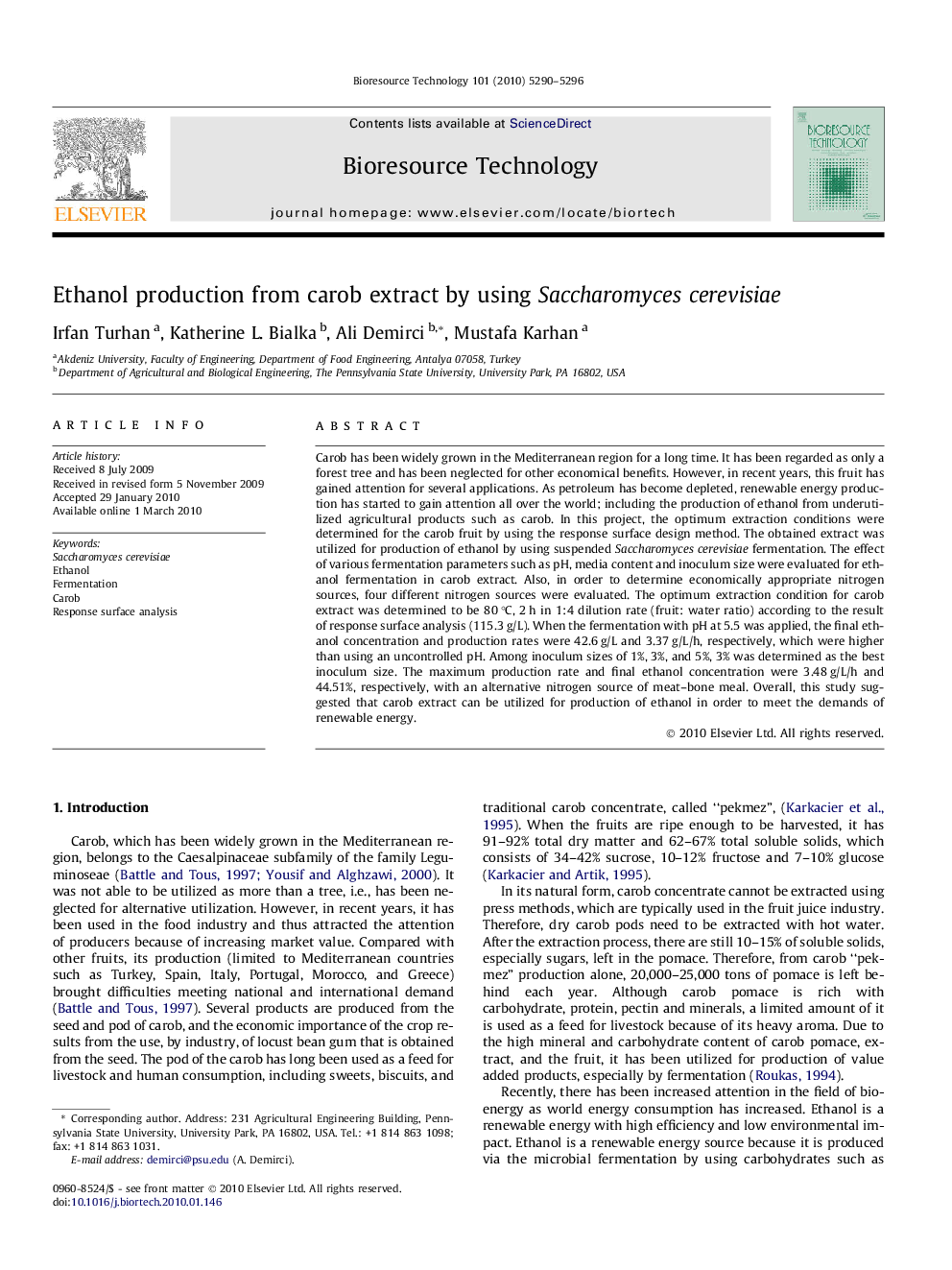| Article ID | Journal | Published Year | Pages | File Type |
|---|---|---|---|---|
| 682955 | Bioresource Technology | 2010 | 7 Pages |
Carob has been widely grown in the Mediterranean region for a long time. It has been regarded as only a forest tree and has been neglected for other economical benefits. However, in recent years, this fruit has gained attention for several applications. As petroleum has become depleted, renewable energy production has started to gain attention all over the world; including the production of ethanol from underutilized agricultural products such as carob. In this project, the optimum extraction conditions were determined for the carob fruit by using the response surface design method. The obtained extract was utilized for production of ethanol by using suspended Saccharomyces cerevisiae fermentation. The effect of various fermentation parameters such as pH, media content and inoculum size were evaluated for ethanol fermentation in carob extract. Also, in order to determine economically appropriate nitrogen sources, four different nitrogen sources were evaluated. The optimum extraction condition for carob extract was determined to be 80 °C, 2 h in 1:4 dilution rate (fruit: water ratio) according to the result of response surface analysis (115.3 g/L). When the fermentation with pH at 5.5 was applied, the final ethanol concentration and production rates were 42.6 g/L and 3.37 g/L/h, respectively, which were higher than using an uncontrolled pH. Among inoculum sizes of 1%, 3%, and 5%, 3% was determined as the best inoculum size. The maximum production rate and final ethanol concentration were 3.48 g/L/h and 44.51%, respectively, with an alternative nitrogen source of meat–bone meal. Overall, this study suggested that carob extract can be utilized for production of ethanol in order to meet the demands of renewable energy.
